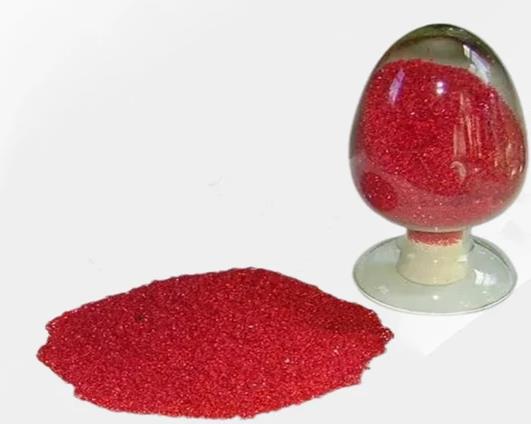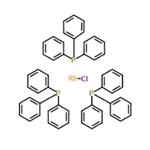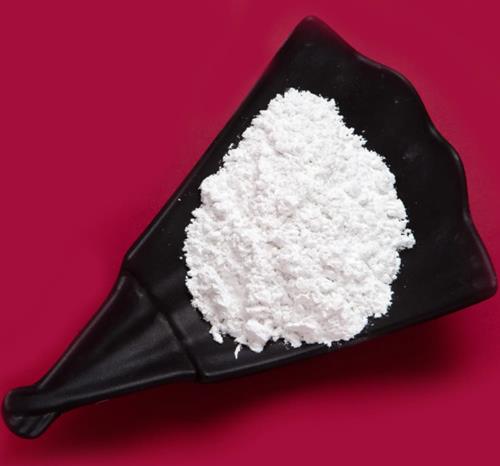Application research of Tris(triphenylphosphine)chlororhodium
Nov 7,2025
Introduction
Tris(triphenylphosphine)chlororhodium(Wilkinson’s catalyst;Tris(triphenylphosphine) rhodium chloride,Figure 1) had been developed as a catalyst for the hydrogenation of olefins in organic medium.[1] Tris(triphenylphosphine)chlororhodium finds wide application in research and production, for example, in the chemospecific hydrogenation of terminal alkenes in the presence of internal alkenes or other easily reduced groups.[2]

Sulfonation of Tris(triphenylphosphine)chlororhodium
Tris(triphenylphosphine)chlororhodium (1.0 g) and 4.0 ml of 20% sulfuric acid was sealed in a 10-ml flask to prevent the loss of SO3 and kept at 45°C with stirring for 8 h. To confirm complete synthesis, a small amount of the reaction mixture was dropped into water. If the reaction was completely finished, the mixture would dissolve rapidly, otherwise, white precipitates would appear. After the reaction, the mixture was neutralized with 50% NaOH and filtered, if necessary, on 3G glass filter to remove sodium sulfate formed as a neutralization by-product. The dark-red solution obtained was freeze-dried. Because the obtained solid still contains as mall amount of sodium sulfate, methanol was added to extract the prepared catalyst and then centrifuged at 1500×g for 15 min. A dark-red supernatant was recovered. The extraction of the catalyst with fresh methanol was repeated until the precipitate became almost white. The supernatant was evaporated and Tris(triphenylphosphine sulfonate) rhodium chloride (sulfonated Wilkinson’scatalyst) was recovered as a dark-red powder. The product yield was approximately 90%. The molar concentration shown below was estimated from the molecular weight of 1844 expected from the predicted form of the compound where a single sulfon group was added to all the phenyl groups of three phenylphosphines. The prepared catalyst was stored in a nitrogen atmosphere at 4°C. Katsuda et al. used a sulfonate of the catalyst for the hydrogenation of coloring agent in an aqueous medium. Several coloring agents, such as methylorange, methyl red sodium, neutral red and Evan’s blue, dissolved in water together with the sulfonated catalyst showed a change in color when hydrogen gas was fed into the solution by sparging at room temperature. We confirmed that methyl orange was decolorized by biologically produced hydrogen, when the photosynthetic bacterial strain Rhodobacter capsulatus ST-410 wasgrown in a medium containing 0.6 mM catalyst and 0.075 mM methyl orange in test tubes of 5 ml working volume.[1]
Diverting Hydrogenations towards Highly Reactive Rhodium(I) Species
Hydrogen not only finds ordinary use in innumerable chemical transformations, but is also the simplest model molecule to study low-energy catalytic pathways towards the activation of most inert s bonds. The discovery of tris(triphenylphosphine)chlororhodium ([Rh(PPh3)3Cl]; ) was instrumental in the fundamental understanding of metal–H interactions and hydrogen activation. Subsequently, this landmark has triggered a rapid evolution on the rational design of hydrogenation catalysts, which in turn, have nurtured a burgeoning progress in other key areas such as asymmetric catalysis,[6]energy storage, and C-H activation.The addition of Barton's base has a dramatic effect on the classic rhodium(III)-mediated hydrogenations promoted by tris(triphenylphosphine)chlororhodium. Following the initial oxidative addition, a barrierless reductive elimination of HCl from the traditional rhodium(III) intermediates instantly produces a rhodium(I) monohydride species, which is remarkably reactive in the hydrogenation of several internal alkynes and functionalized trisubstituted alkenes. The direct formation of this species is unprecedented upon addition of molecular hydrogen and its catalytic potential has been hitherto barely explored.[2]
New method for hydrogen gas for screening hydrogen-producing microorganisms
A water-soluble color indicator was developed for the effective screening of hydrogen-producing microorganisms. This indicator consists of a coloring agent and a water-soluble derivative of Wilkinson's catalyst. Wilkinson's catalyst,Tris(triphenylphosphine)chlororhodium, had been developed as a catalyst for the hydrogenation of olefins. Researchers used a sulfonate of the catalyst for the hydrogenation of coloring agent in an aqueous medium. Several coloring agents, such as methyl orange, methyl red sodium, neutral red and Evan's blue, dissolved in water together with the sulfonated catalyst showed a change in color when hydrogen gas was fed into the solution by sparging at room temperature. Researchers confirmed that methyl orange was decolorized by biologically produced hydrogen, when the photosynthetic bacterial strain Rhodobacter capsulatus ST-410 was grown in a medium containing 0.6 mM catalyst and 0.075 mM methyl orange in test tubes of 5 ml working volume.[3]
References
1. Katsuda T, Ooshima H, Azuma M, Kato J. New detection method for hydrogen gas for screening hydrogen-producing microorganisms using water-soluble wilkinson's catalyst derivative. J Biosci Bioeng. 2006;102(3):220-226. doi:10.1263/jbb.102.220
2. Perea-Buceta JE, Fernández I, Heikkinen S, et al. Diverting Hydrogenations with Wilkinson's Catalyst towards Highly Reactive Rhodium(I) Species. Angew Chem Int Ed Engl. 2015;54(48):14321-14325. doi:10.1002/anie.201506216
3. Katsuda T, Ooshima H, Azuma M, Kato J. New detection method for hydrogen gas for screening hydrogen-producing microorganisms using water-soluble wilkinson's catalyst derivative. J Biosci Bioeng. 2006;102(3):220-226. doi:10.1263/jbb.102.220
- Related articles
- Related Qustion
Nafamostat mesylate is a broad-spectrum synthetic serine protease inhibitor that was used for non-infection indications. Its pharmacology will be introduced.....
Nov 7,2025DrugsTris(triphenylphosphine)chlororhodium
14694-95-2You may like
Tris(triphenylphosphine)chlororhodium manufacturers
- Tris(triphenylphosphine)rhodium(I) chloride
-

- $52.00 / 1g
- 2025-11-14
- CAS:14694-95-2
- Min. Order: 1g
- Purity: 0.98
- Supply Ability: 10kg
- Tris(triphenylphosphine)rhodiu
-

- $2.00 / 100kg
- 2025-10-13
- CAS:14694-95-2
- Min. Order: 1kg
- Purity: 99%
- Supply Ability: 100kg
- Tris(triphenylphosphine)chlororhodium
-

- $0.00 / 1g
- 2025-07-08
- CAS:14694-95-2
- Min. Order: 0.10000000149011612g
- Purity: 11.1%Rh
- Supply Ability: 10kg





